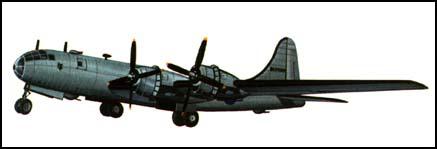B-29 Superfortress
In 1933 the Boeing Aircraft Company began work on producing a strategic bomber for the United States Air Force. The specifications provided by the USAF included an aircraft that could carry 2,000 pounds of bombs a distance of 5,000 miles.
After the development of several prototypes, the B-29 Superfortress flew for the first time on 21st September, 1942. The aircraft, with its ten man crew, had a maximum speed of 358 mph (576 km) and had a range of 4,100 miles (4,800 km). It was 99 ft (30.18 m) long with a wingspan of 141 ft 3 in (43.05 m). The aircraft was armed with one 20 mm cannon, 10 machine-guns and could carry 20,000 lb (9,0909 kg) of bombs.
A total of 3,970 were built and over 2,000 of these were operational before the end of the war. By 1945 B-29s based in the Pacific were carrying out heavy bombing raids on Japan. The large number of Japanese buildings made of wood made it easy for the bombers to create firestorms. On the 9th and 10th March 1945, a raid on Tokyo devastated the city. This was followed by attacks on other Japanese cities.
By the summer of 1945 the USAAF was ready to mount its final strategic bombing campaign. On 6th August 1945, a B29 bomber piloted by colonel Paul W. Tibbets flying at 330 mph (528 km) at an altitude of more than 30,000 ft (9,630) dropped an atom bomb on Hiroshima. Japan continued to fight and a second bomb was dropped on Nagasaki three days later. On 10th August the Japanese surrendered and the Second World War was over.

